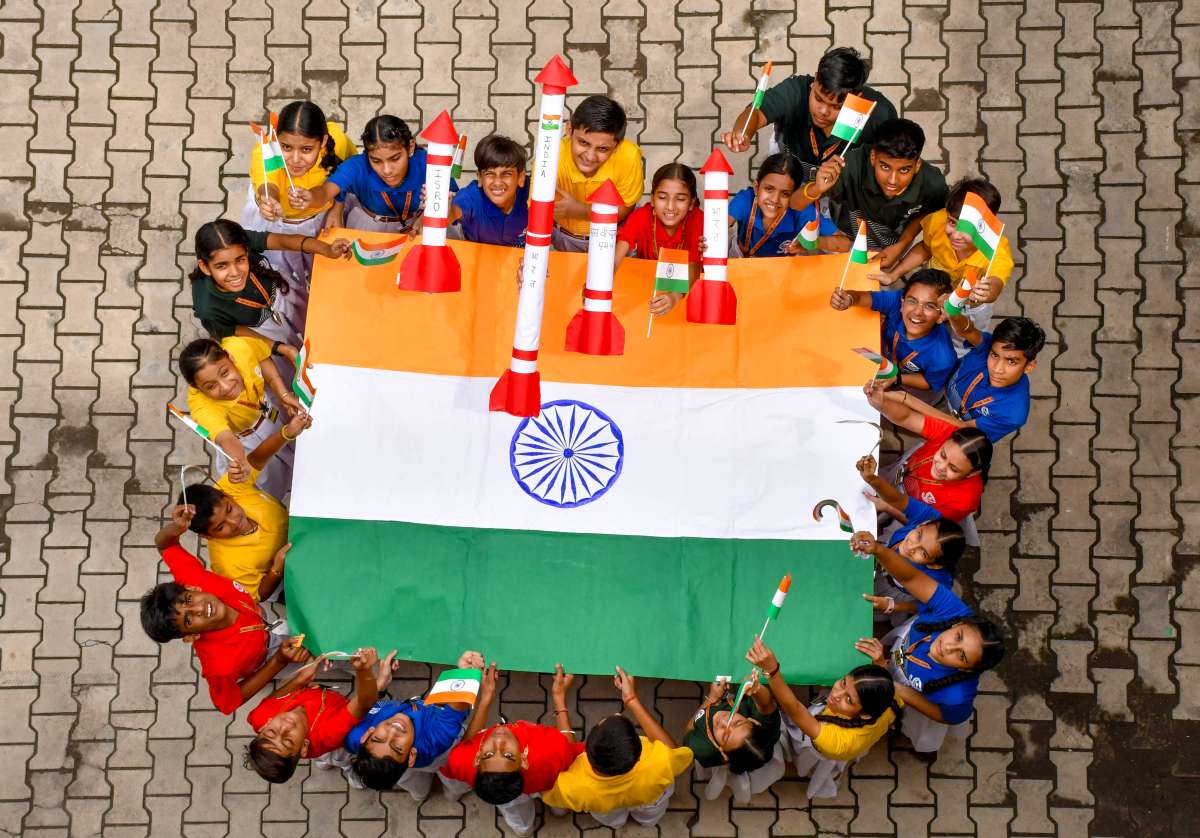ISRO Chairman Somanath says the Aditya-L1 satellite for the Sun mission will be launched during the first week of September…reports Asian Lite News
After its giant leap with the Chandrayaan-3 lander module successfully landing on the moon’s South Pole, India has now set its goal on the Sun.
Speaking to reporters ISRO Chairman S. Somanath said the Aditya-L1 satellite for the Sun mission will be launched during the first week of September. According to him, the coronagraphy satellite will take about 120 days to travel about 15 lakh km to reach its destination to study the solar atmosphere.
The Aditya-L1 spacecraft — the first space-based Indian observatory to study the Sun — is getting ready for the launch at India’s rocket port in Sriharikota. According to the ISRO, the spacecraft will be placed into a halo orbit around the first Lagrange point, L1, of the Sun-Earth system.
The satellite around the L1 point has the major advantage of continuously viewing the Sun without occultation/eclipses. The Aditya-L1 satellite — named after the Sun God — will be carried by Indian rocket Polar Satellite Launch Vehicle (PSLV). The satellite will be shortly integrated with the rocket.
The Sun mission will be followed with the Gaganyaan abort mission demonstration- which is part of India’s human space mission. The Gaganyaan abort mission will happen during September end or during the first week of October this year, Somanath said.
The Indian space agency is also planning to orbit INSAT 3DS satellite with its GSLV rocket this year, Somanath added. After that, will be the orbiting of Anwesha satellite and XPoSAT- a X-Ray Polarimeter Satellite.
It will be the country’s dedicated polarimetry mission to study the dynamics of bright astronomical X-ray sources in extreme conditions, the government said. The launch of the Radar Imaging Satellite – RISAT-1B – aboard the PSLV rocket is planned during 2023.
The Indian space agency is also planning to orbit two IDRSS (Indian Data Relay Satellite System) satellites. These rocketing missions apart, ISRO will be testing the various systems that will go into its LVM3 rocket for the maiden human space mission.
ISRO has also slated a flight to Venus — Venus Mission — in 2024. Whether it is going to be a ‘Night Flight to Venus’ will be known later.
Earlier, on Wednesday, Prime Minister Narendra Modi who is currently attending the 15th BRICS Summit in Johannesburg said, “India is on the moon!” celebrating ISRO’s feat.
The countdown of the Vikram hovered at 150 metres, then 130 metres, 50 metres and decelerated as approached the moon’s service before finally touching down on the lunar surface.
As the Vikram lander carrying the Pragyaan rover in its belly touched down on the lunar surface, it marked a giant leap in India’s spacefaring journey providing a well-deserved finale to ISRO’s long years of toil.
This makes India becomes the fourth country – after US, China, and Russia – to have successfully landed on the moon’s surface, it has earned a place in record books as the first to touchdown on the south side of Earth’s only natural satellite.
Billions of people across India and globally closely monitoring the much-awaited event. More so after Russia’s Luna-25 spacecraft crashed on Sunday after spinning out of control.
In the run-up to the scheduled soft landing of Chandrayaan-3, people across the country prayed to God in all denominations of places of worship for a successful mission.
Special screenings of the soft landing were organized across the country, including schools and science centers, and public institutions. ISRO made the live actions available on the ISRO website, its YouTube channel, Facebook, and public broadcaster DD National TV.
The scheduled timing for the soft landing of Chandrayaan-3 on the moon’s south pole on August 23, 2023 (Wednesday), was 18:04 IST, with the powered descent of Vikram lander at 1745 IST.
ISRO had been releasing a series of up-close images of the moon, assisting the lander module in determining its position (latitude and longitude) by matching them against an onboard moon reference map.
Historically, spacecraft missions to the Moon have primarily targeted the equatorial region due to its favourable terrain and operating conditions. However, the lunar south pole presents a vastly different and more challenging terrain compared to the equatorial region
The spacecraft was launched from the Satish Dhawan Space Centre in Andhra Pradesh’s Sriharikota on July 14.
A GSLV Mark 3 (LVM 3) heavy-lift launch vehicle was used for the launch of the spacecraft that was placed in the lunar orbit on August 5 and since then it was through a series of orbital manoeuvres been lowered closer to the moon’s surface.
Ever since the July 14 launch, ISRO had been maintaining that the health of the spacecraft remained “normal”.
On August 5, Chandrayaan-3 was successfully inserted into the lunar orbit with multiple key manoeuvres thereafter.
Then on August 17, the mission marked another giant leap in its lunar quest as the ‘Vikram’ lander module of the spacecraft successfully separated from the propulsion module on Thursday. The Chandrayaan-3 mission’s lander is named after Vikram Sarabhai (1919–1971), who is widely regarded as the father of the Indian space programme.

